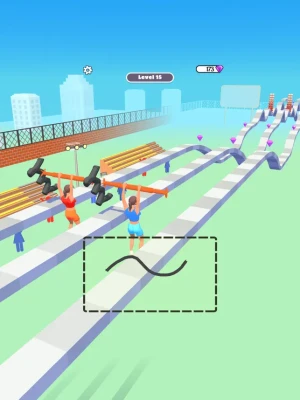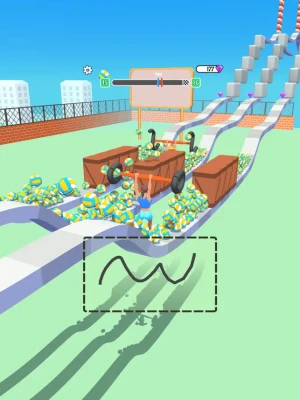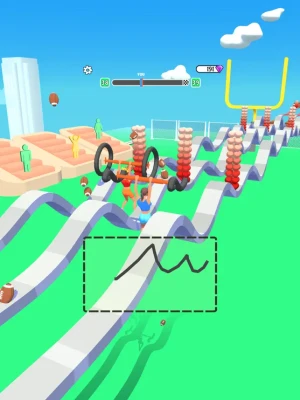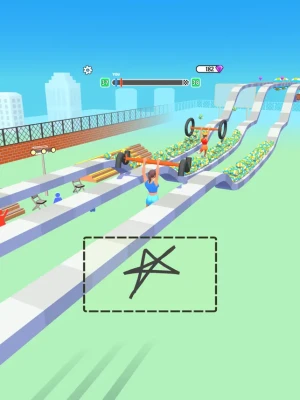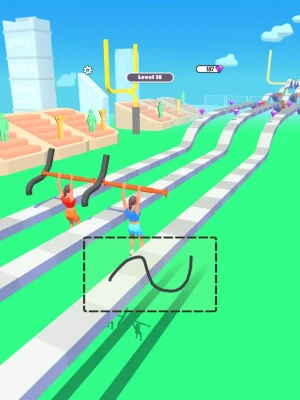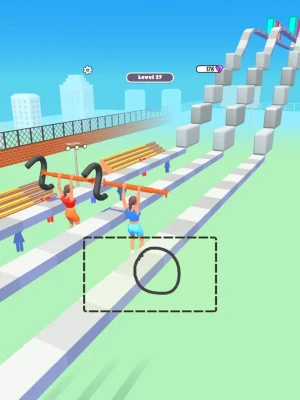
Latest Version
2.0.8
January 26, 2025
Draw the best rail!
Games
iOS
257.9 MB
0
Free
Report a Problem
More About Draw Rail!
Mastering Rail Design: How to Align Your Rails with Level Platforms for Optimal Speed
In the world of rail transport, the alignment of rails with level platforms is crucial for ensuring speed and safety. This article delves into the importance of proper rail design and offers practical tips for achieving optimal alignment. Whether you are an engineer, a rail enthusiast, or simply curious about rail systems, understanding these principles can enhance your knowledge and application of rail design.
Understanding the Importance of Rail Alignment
Rail alignment refers to the precise positioning of rails in relation to each other and the surrounding infrastructure. Proper alignment is essential for several reasons:
- Safety: Misaligned rails can lead to derailments, posing significant risks to passengers and cargo.
- Speed: Level platforms allow trains to maintain higher speeds, reducing travel time and improving efficiency.
- Maintenance: Well-aligned rails require less frequent maintenance, saving time and resources in the long run.
Key Factors in Rail Design
To achieve optimal rail alignment, several key factors must be considered:
1. Terrain Analysis
Before laying down rails, it is essential to conduct a thorough analysis of the terrain. Understanding the landscape helps in planning the most efficient route, minimizing elevation changes that can affect speed.
2. Material Selection
The choice of materials for rails and ties plays a significant role in alignment. High-quality steel rails and durable ties can withstand the forces exerted by trains, maintaining their position over time.
3. Engineering Standards
Adhering to established engineering standards is vital for ensuring that rails are laid correctly. These standards provide guidelines on spacing, elevation, and curvature, all of which contribute to the overall alignment.
Techniques for Achieving Level Platforms
Once the foundational factors are in place, several techniques can be employed to ensure that rails are aligned with level platforms:
1. Use of Laser Technology
Modern rail construction often utilizes laser technology to achieve precise alignment. Lasers can help surveyors determine the exact level of the ground and ensure that rails are laid flat and true.
2. Regular Inspections
Conducting regular inspections of rail alignment is crucial. This includes checking for any shifts or settling that may occur over time. Early detection of misalignment can prevent larger issues down the line.
3. Continuous Monitoring Systems
Implementing continuous monitoring systems can provide real-time data on rail conditions. These systems can alert maintenance teams to any deviations from the desired alignment, allowing for prompt corrective action.
Benefits of Proper Rail Alignment
Investing time and resources into proper rail alignment yields numerous benefits:
- Increased Efficiency: Trains can travel faster and more smoothly, leading to improved schedules and reduced operational costs.
- Enhanced Safety: A well-aligned rail system minimizes the risk of accidents, ensuring the safety of passengers and cargo.
- Longer Lifespan: Properly aligned rails experience less wear and tear, extending their lifespan and reducing the need for frequent replacements.
Conclusion
Aligning rails with level platforms is a fundamental aspect of rail design that directly impacts speed, safety, and efficiency. By understanding the importance of proper alignment and employing effective techniques, rail systems can operate at their best. Whether you are involved in rail construction or simply interested in the mechanics of rail transport, mastering these principles will enhance your understanding and appreciation of this vital infrastructure.
In summary, the alignment of rails is not just a technical requirement; it is a critical factor that influences the overall performance of rail systems. By prioritizing proper rail design, we can ensure a safer, faster, and more efficient future for rail transport.
Rate the App
User Reviews
Popular Apps










Editor's Choice











